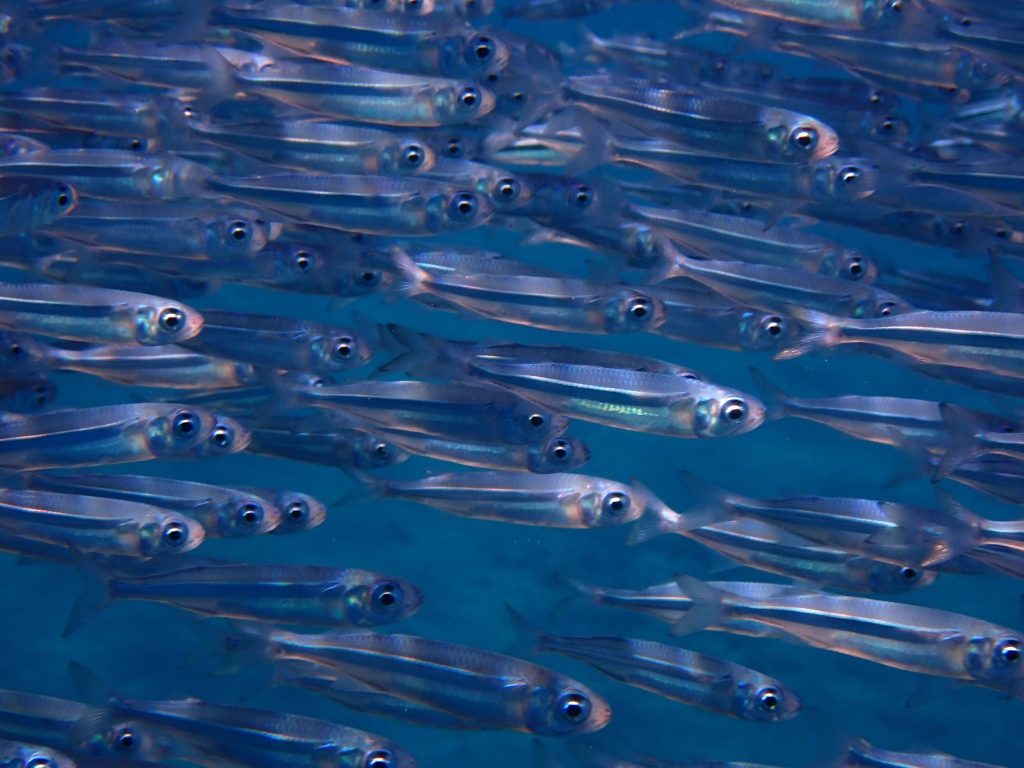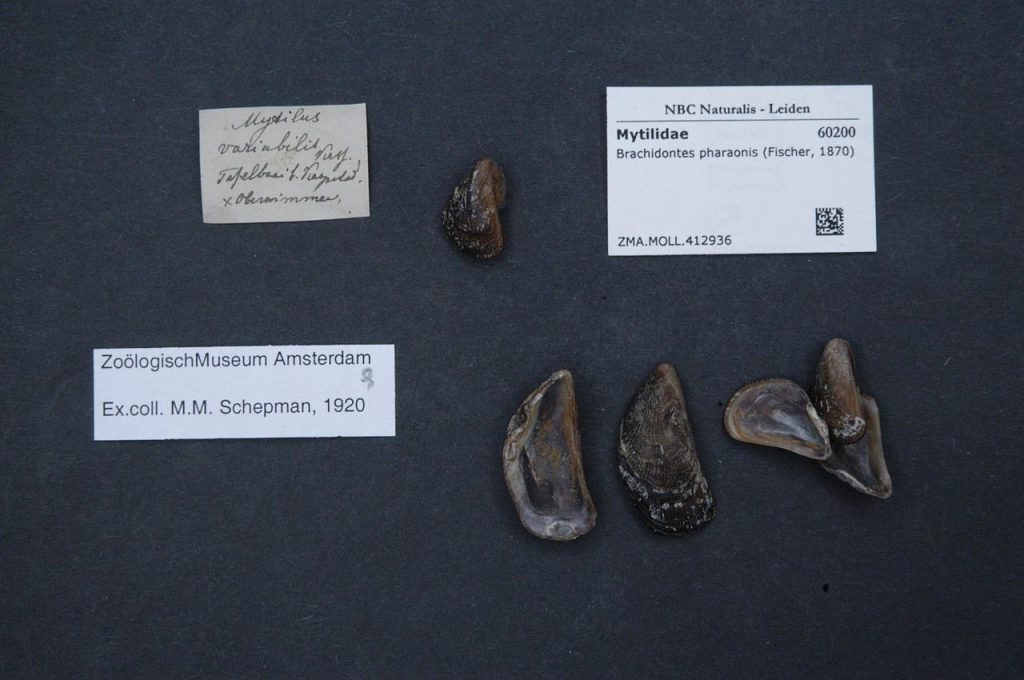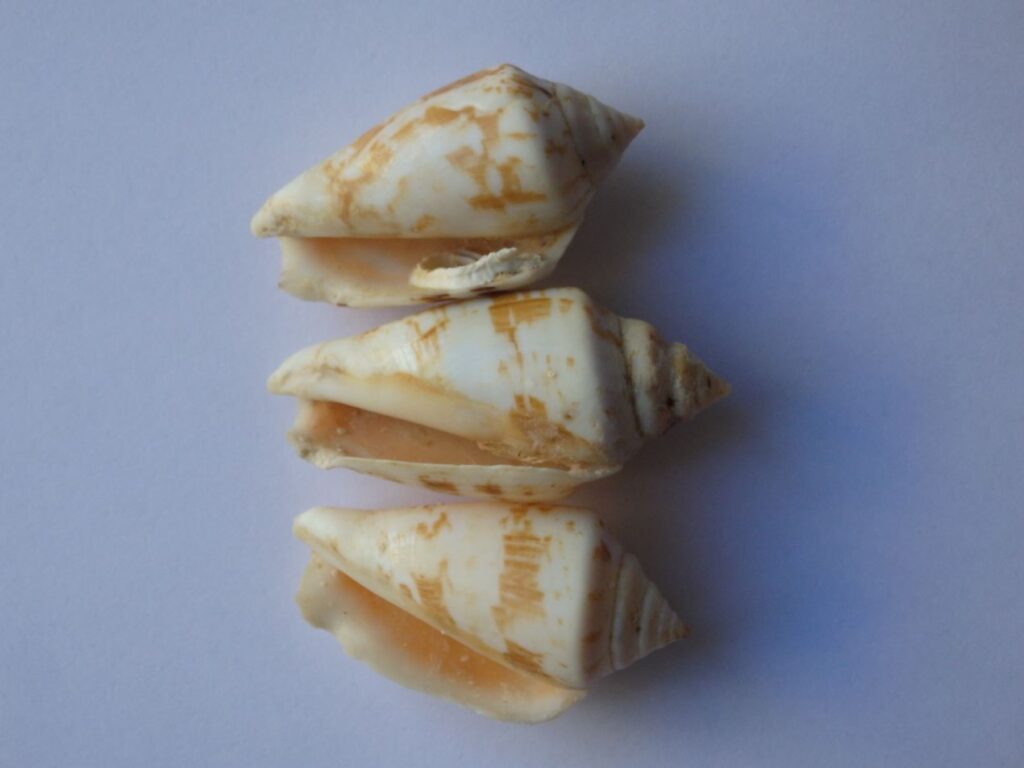Atherinomorus forsskali
Atherinomorus forsskali Read More »
Make a call: +30 211 10 65 217
Email:elnais(at)hcmr.gr
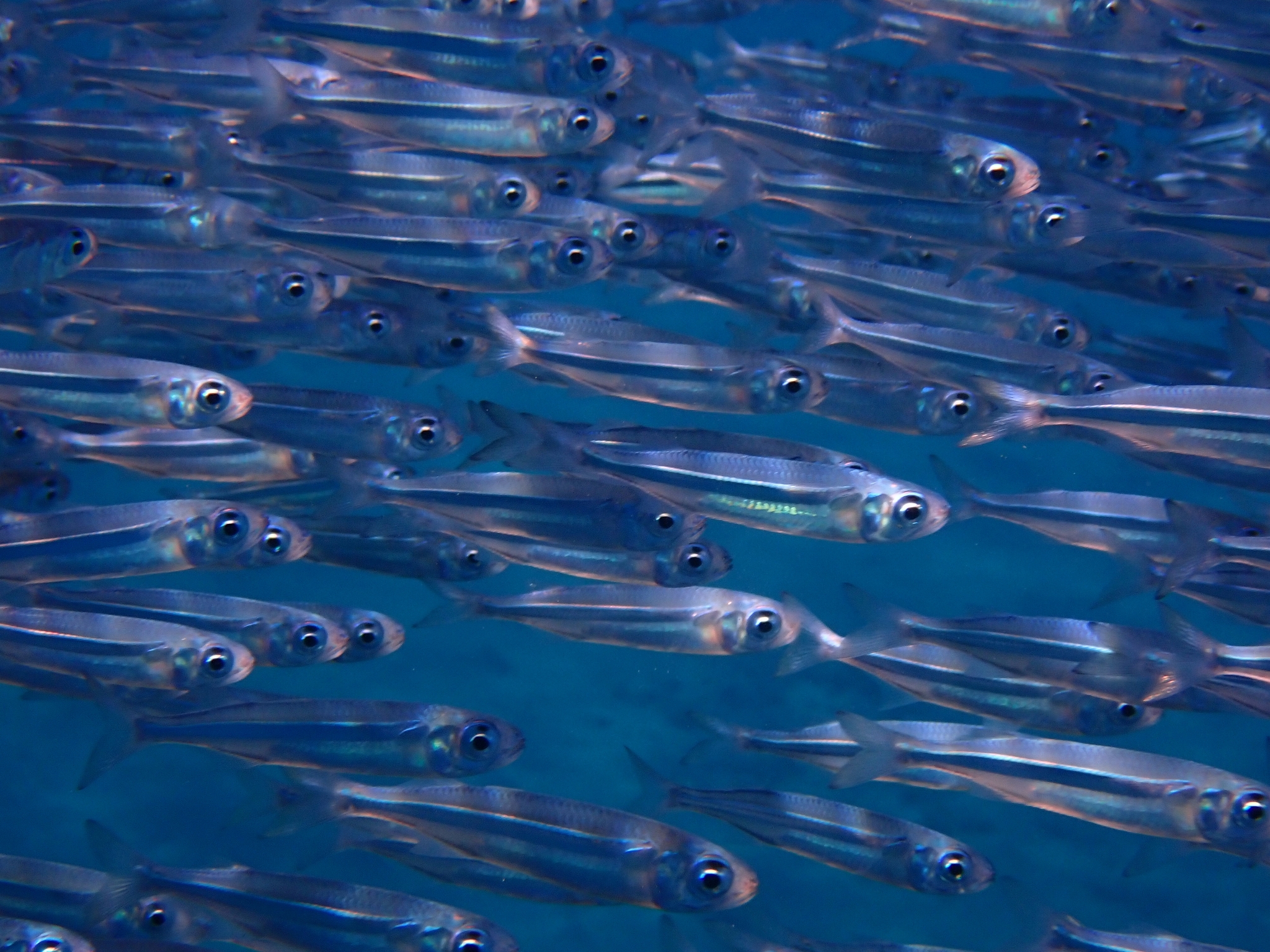
Small-sized fish that can grow upr to 14 cm, but commonly around 10–12 cm. Eye relatively large. Colour overall silvery, greenish on the dorsal area. A bright blue strip along the body.
Quignard, J.P., Pras, A. (1986). Atherinidae. In: Whitehead PJP, Bauchot M-L, Hureau J-C, Nielsen J, Tortonese E (eds), Fishes of the North-eastern Atlantic and the Mediterranean, Vol. 3. Paris, pp 1207-1210.
1986
UNA
Red Sea hardyhead silverside
It forms large schools along sandy shorelines and reef margins. Feeds on a wide variety of plankton and small benthic invertebrates.
No impact on biodiversity has been reported to date.
No impacts on health and ecosystem services have been recorded.
Yes
No
Sites where Atherinomorus forsskali has been recorded in the Hellenic Sea.
Atherinomorus forsskali Read More »
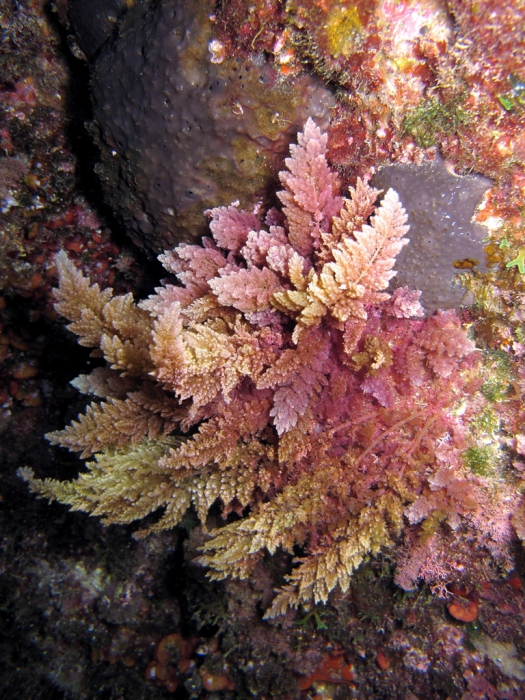
Thalli mostly gregarious, caespitose, dark red, purplish red, or purple-violaceous, with creeping stolons (cylindrical, intricate and irregularly branched) giving rise to erect axes 6-20 cm high. Erect axes stout, sparingly divided, naked below or with the stubs of lateral branches and densely covered with numerous plumose branchlets on all sides above (pyramidal outline). Branchlets soft, delicate, repeatedly alternately divided. Apices extremely fine.
Athanasiadis, A. (1997). North Aegean Marine Algae IV. Womersleyella setacea (Hollenberg) R.E. Norris (Rhodophyta, Ceramiales). Botanica Marina 40: 473-476.
1992
UNA
Growing on hard substrate in low intertidal and upper subtidal, exposed to moderate and strong wave action.
No impact on biodiversity has been reported to date.
Sites where Asparagopsis taxiformis has been recorded in the Hellenic Sea.
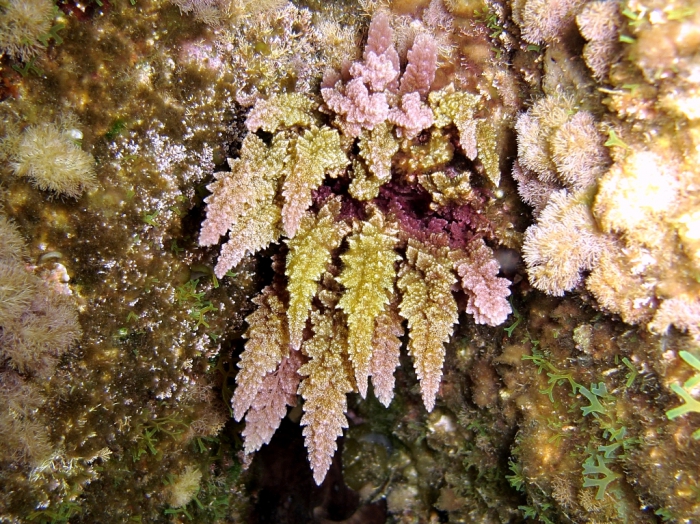

Asparagopsis taxiformis Read More »
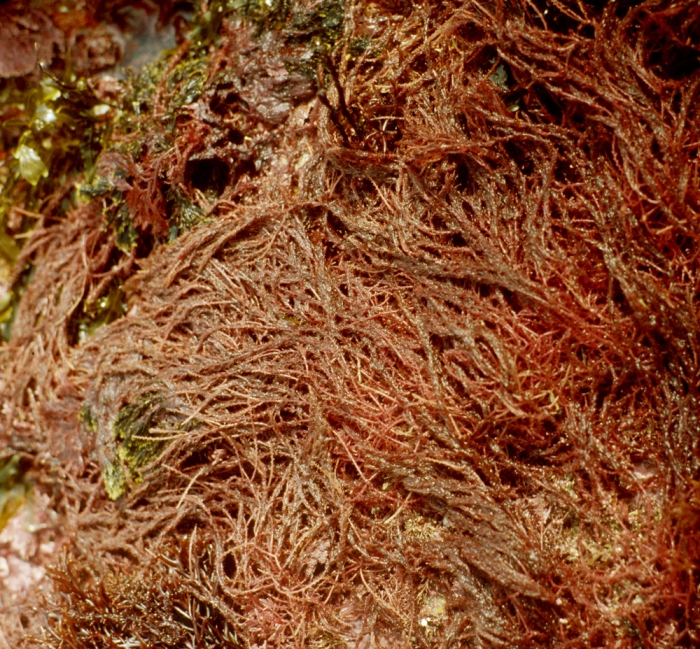
Species of marine red algae, in the family Bonnemaisoniaceae. They are multicellular eukaryotic organisms.
Nicolaidou A, Alongi G, Aydogan O, Catra M, Cavas L, Cevik C, Dosi A, Circosta V, Giakoumi S, Gimenez-Casalduero F, Filiz H, Izquierso-Munoz A, Kalogirou S, Konstantinidis E, Kousteni V, Kout J, Legaki A, Megalofonou P, Ovalis P, Paolillo G, Paschos I, Perdikakis C, Poursanidis D, Ramos-Espla AA, Reizopoulou S, Sperone E, Taskin E, Tripepi S, Vazquez-Luis M (2012). New Mediterranean biodiversity records (June 2012). Mediterranean Marine Science 13(1): 162-174
2010
UNA
Red harpoon weed
The species usually develops on infralittoral rocky bottoms around the seawater surface to around 40m of depth. Marine algae like A. armata are considered “autogenic ecosystem engineers” as they are at the very bottom of the food chain and control resource availability to other organisms in the ecosystem.
No impact on biodiversity has been reported to date.
Sites where Asparagopsis armada has been recorded in the Hellenic Sea.

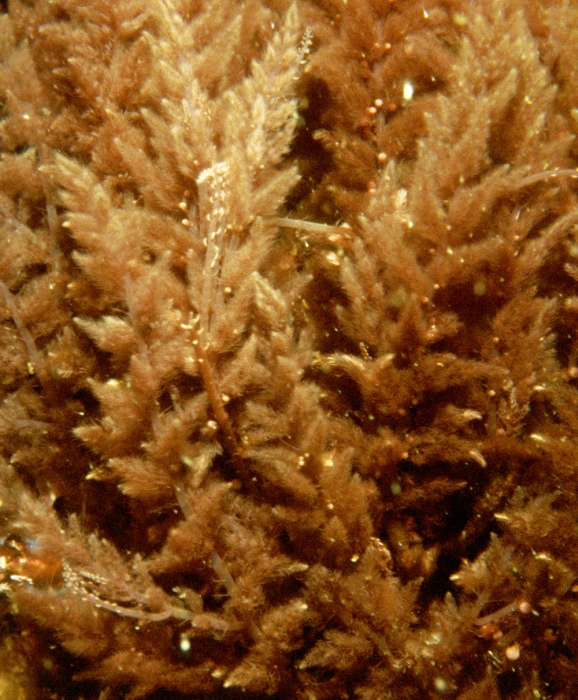
Asparagopsis armata Read More »
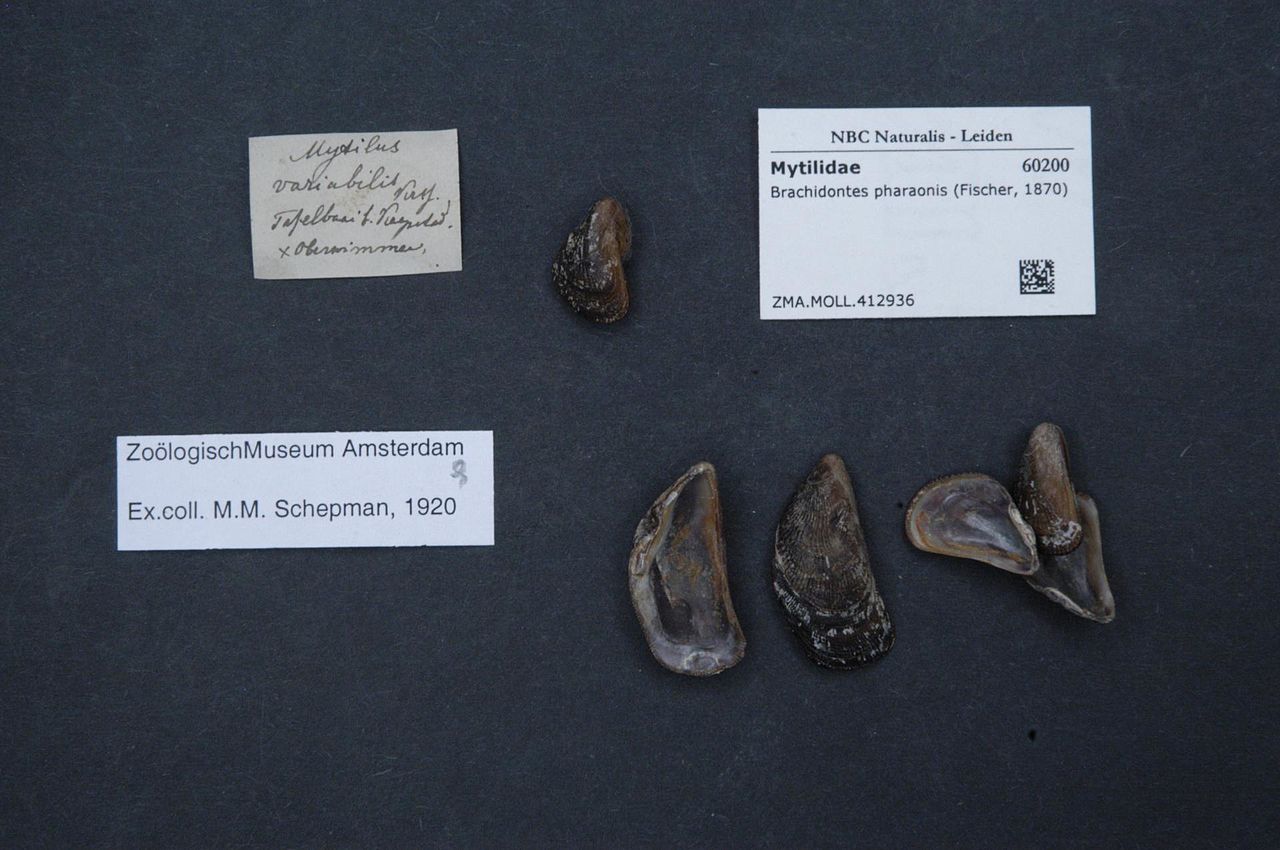
Brachidontes pharaonis is a small bivalve that grows its shell up to 40mm in length. The external surfaces of the shell are dark brownish black while the interior of the shell is purplish-black. The two halves of the shell are equal in size and similar in shape, being elongated and asymmetrical, with a dysodont hinge between the valves. It s attached to the substrate by thick byssus.
Tenekides, N.S. (1989). On a collection of shells from the Greek Seas. Protopapa Press, Athens, 187 pp (in Greek).
1975
UNA, TS
Typical inhabitant of hard substrata. Suspension feeders. Lives in shallow water attached by its byssus to rocks and stones, mostly in clusters. It is a filter feeder, filtering suspended food from the water, mainly phytoplankton or suspended organic detritus.
No impacts on biodiversity have been reported.
Yes
No
Sites where Brachidontes pharaoinis has been recorded in the Hellenic Sea.
Brachidontes pharaonis Read More »
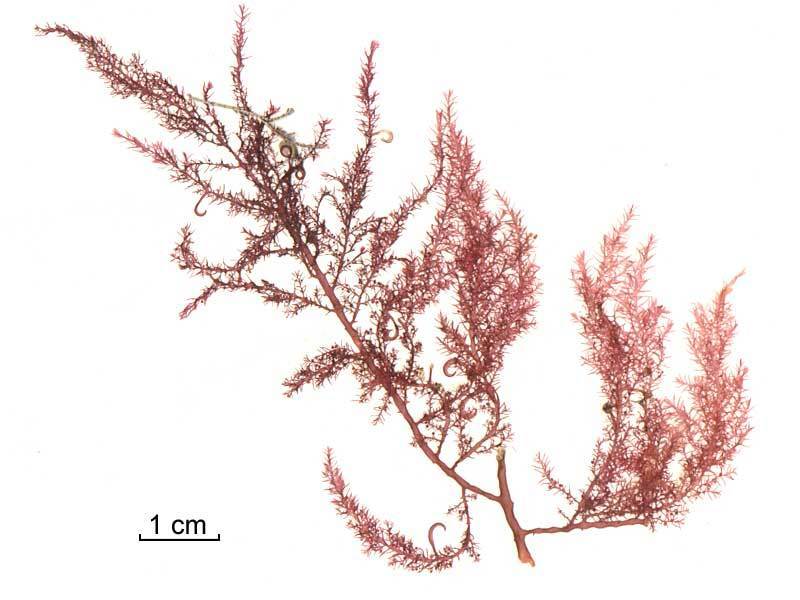
The species is included in the red algae family Bonnemaisoniaceae. Originally from the Pacific Ocean, it has been introduced into the northeastern Atlantic Ocean and the Mediterranean Sea, where it is considered invasive on European coasts. It exists in two phases which, at one time, were thought to be different species; a medium-sized feathery form attached to other seaweeds, and a small tufted form known as Trailliella.
Skoufas, G., Tsirika, A., (2003). Preliminary results of the epibiotic flora on Eunicella singularis (Gorgonacea) colonies from the north Aegean Sea. p. 244. In: Proceedings of the Second Mediterranean Symposium on Marine Vegetation, Athens, December 2003.
2003
UNA
Red Sea hardyhead silverside
Gametangial phase usually sublittoral or occasionally low littoral. Tetrasporangial phase usually epiphytic in lower littoral and sublittoral to 8 m.
Sites where Atherinomorus forsskali has been recorded in the Hellenic Sea.
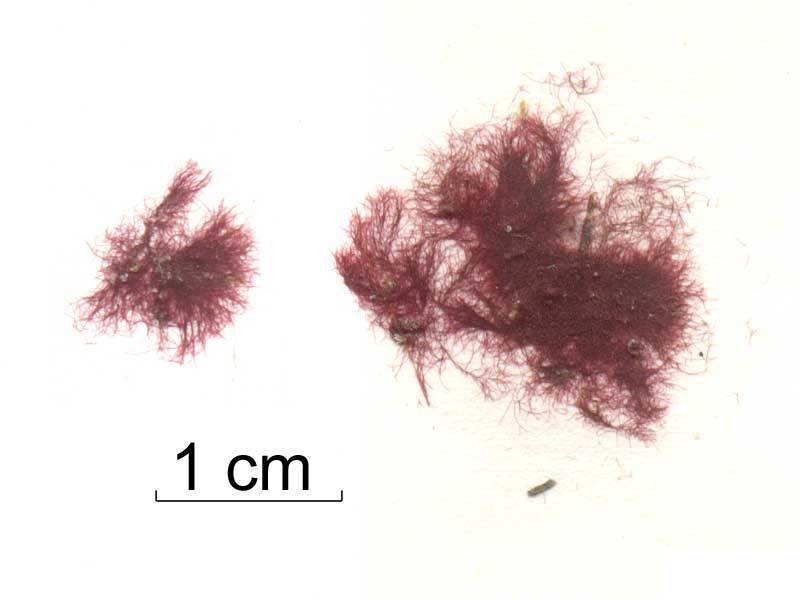

Bonnemaisonia hamifera Read More »
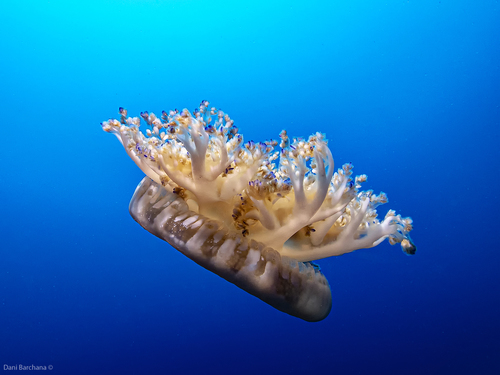
Flat disc, with 8 short arms; each arm with 4-6 branches ornamented with many filaments and clubs. Usually lies on the sea-floor in calm waters turned upside down. Yellow-brown in color, with paler spots and streaks, some animals of white, blue, and green color.
Schäfer, W. (1955). Eine Qualle aus dem Indischen Ozean in der Agais. Natur und Volk 85: 241-245
1942
UNA
Upside-down jellyfish
Lives in shallow, sandy-muddy, warm, clear waters. Reaches sizes of ≈30 cm.
Feeds on pelagic animals, and on small animals living close to the sea floor. Symbiotic microalgae provide nutrients.
Venomous and can kill fish and other marine organisms that come into contact.
Impact on other species is unknown.
Jellyfish causing a mild sting upon contact. Not highly dangerous.
Predation upon fish larvae and eggs could potentially cause impacts on fisheries.
Appealing for snorkelers/divers.
No
No (painful sting)
Sites where Cassiopea andromeda has been recorded in the Hellenic Sea.

Cassiopea andromeda Read More »
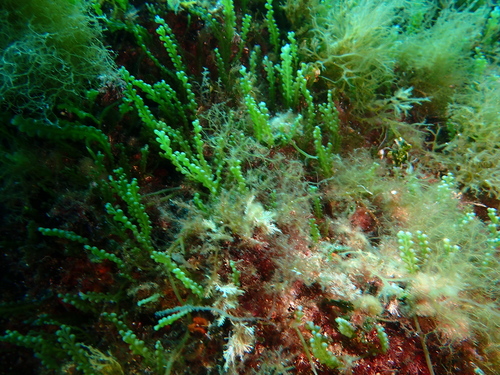
The green macroalgae is considered an invasive species native from Australia that has rapidly spread across the Mediterranean since 1926. It colonises a variety of substrata, and its dominating presence has been found to alter indigenous flora and fauna biodiversity. This algal species has been a key invasive species in the NE Mediterranean and appeared in the Aegean Sea since late 1990’s.
Panayotidis, P., Montesanto, B. (1994). Caulerpa racemosa (Chlorophyta) on the Greek coasts. Cryptogamie-Algologie 15(2): 159-161.
1993
UNA
The species has been recorded on a variety of substrates and benthic assemblages (0-70 m depth), in both polluted and unpolluted areas, and proliferated rapidly showing high adaptability to physical stressors maintaining an high eco-physiological rates between 25 °C and 29 °C. It can spread by fragmentation sexual reproduction and its spherical branchlets can also act as propagules.
Caulerpa cylindracea exerts negative effects on marine macrophytes, and can alter the behavior of native species, with putative adverse repercussions on patterns of fish growth and population dynamics.
Sites where Caulerpa cylindracea has been recorded in the Hellenic Sea.
Caulerpa cylindracea Read More »
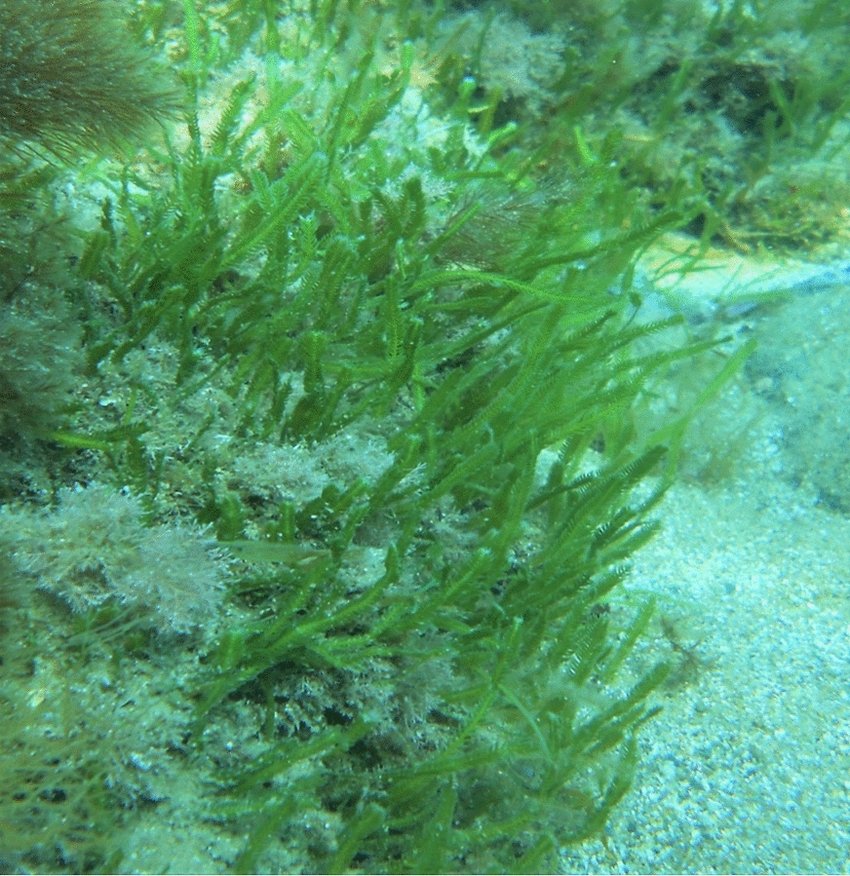
The species occurs in high abundances and dominated the benthic community, suggesting that has the potential to become a major pest in the Mediterranean. It was also observed over a very wide depth range, from the sea surface to at least 100 m depth, on a variety of natural soft and hard substrates as well as abandoned fishing nets, suggesting a broad environmental plasticity.
Aplikioti M, Louizidou P, Mystikou A, Marcou M, Stavrou P, Kalogirou S, Tsiamis K, Panayotidis P, Kuepper FC (2016) Further expansion of the alien seaweed Caulerpa taxifolia var. distichophylla (Sonder) Verlaque, Huisman & Procacini (Ulvophyceae, Bryopsidales) in the Eastern Mediterranean Sea. Aquatic Invasions 11(1): 11-20
2010
UNA
The species occurs in high abundances and dominated the benthic community, suggesting that has the potential to become a major pest in the Mediterranean. It was also observed over a very wide depth range, from the sea surface to at least 100 m depth, on a variety of natural soft and hard substrates as well as abandoned fishing nets, suggesting a broad environmental plasticity.
Sites where Caulerpa taxifolia var. distichophylla has been recorded in the Hellenic Seas.
Caulerpa taxifolia var. distichophylla Read More »
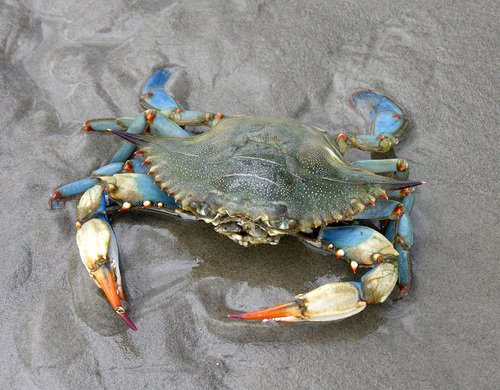
Body almost twice as wide than long, ornamented with teeth in the front and two prominent lateral spines. Claws elongated. Two last segments of the fifth legs are flattened to paddles. Colour greyish, bluish to brownish green, with lighter coloured to pinkish tints.
Serbetis, C. (1959). Un nouveau crustace commestible en mer Egee Callinectes sapidus Rath. (Decapod brach.). General Fisheries Council for the Mediterranean (GFMC) Proceedings and Technical Papers 5: 505-507.
1947
TS
Bluecrab
Lives in a wide range of environments, but more often seen in estuaries. Capable of swimming, but also burrows in muddy-sandy bottoms. Reaches sizes of ≈20 cm. An omnivore that is active and abundant in shallow habitats. Highly cannibalistic.
High ecological impact is expected on coastal ecosystems, by competition or predation.
It is considered to affect seagrass communities, by feeding on seedlings and live plant, bioturbation and unrooting.
Very aggressive, but there are no official reports on humans being injured. The species is a commercial one. Yet, it is responsible for destruction of fishing gear and fish being caught on nets. Moreover, it preys upon other exploited species thus leading to reduced catches.
Yes
Yes (aggressive behavior)
Sites where Callinectes sapidus has been recorded in the Hellenic Sea.
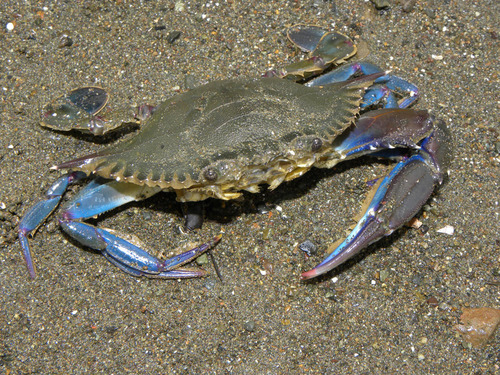

Callinectes sapidus Read More »
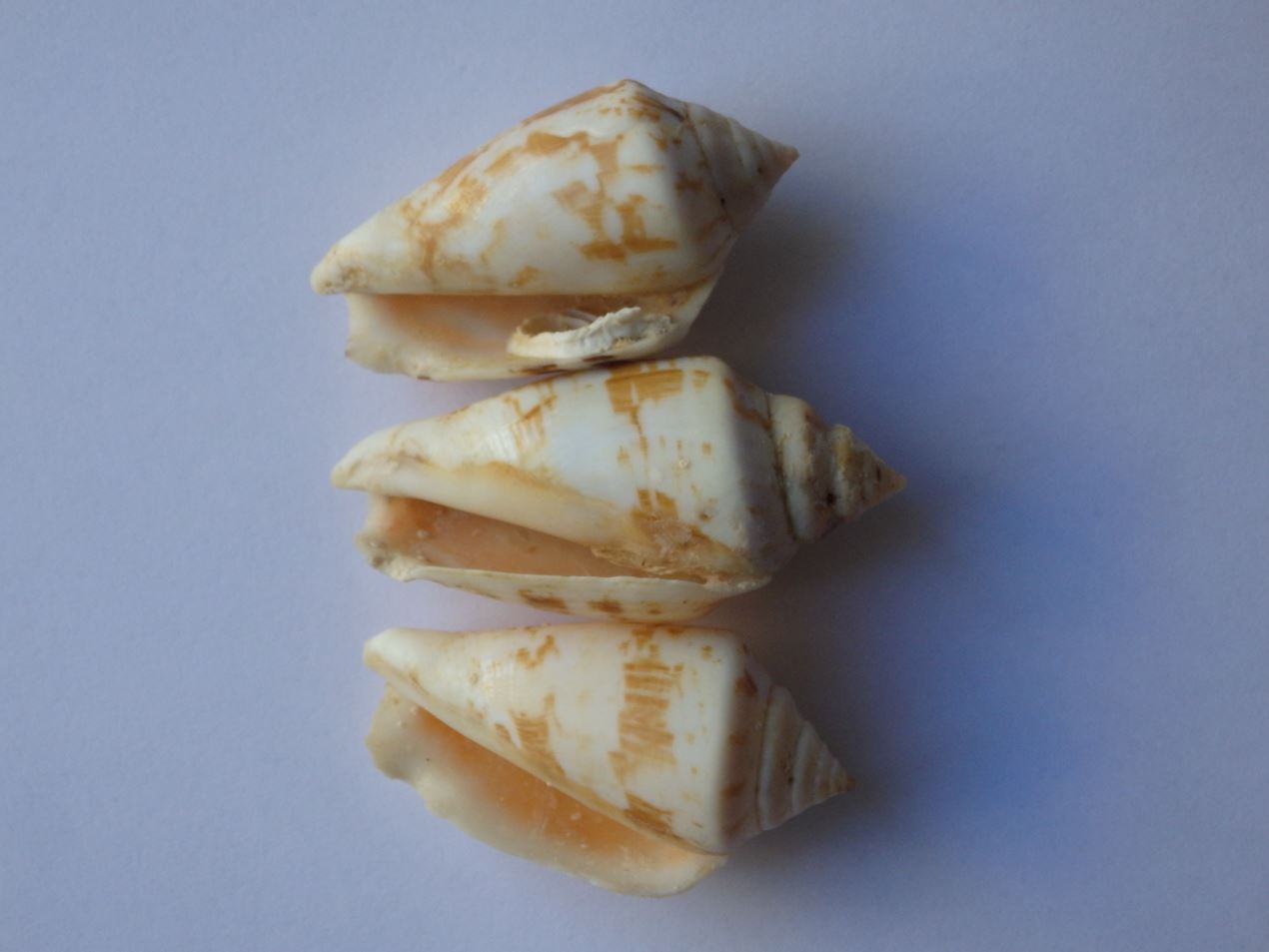
Shell biconical, with a moderately high spire and a large body whorl. Spire whorls with a definite keel, which is continued on the body whorl at a short distance from the suture. It has a whitish background, and brown markings organized to form unequal spiral bands. Its size ranges from 35 to 45mm. (50 mm, max.).
Verhecken, A. (1984). Strombus decorus raybaudii in de Middellandse Zee. Gloria Maris 23: 79-88
1983
UNA, TS
Persian conch
All Strombus species are herbivorous, feeding on algae. They live in low-energy environments of shallow bays, on mixed (rock/sand/mud) bottoms.
No impacts on local biodiversity have been recorded.
No impacts on health and ecosystem services have been recorded.
No
No
Sites where Conomurex persicus has been recorded in the Hellenic Seas.

Conomurex persicus Read More »
